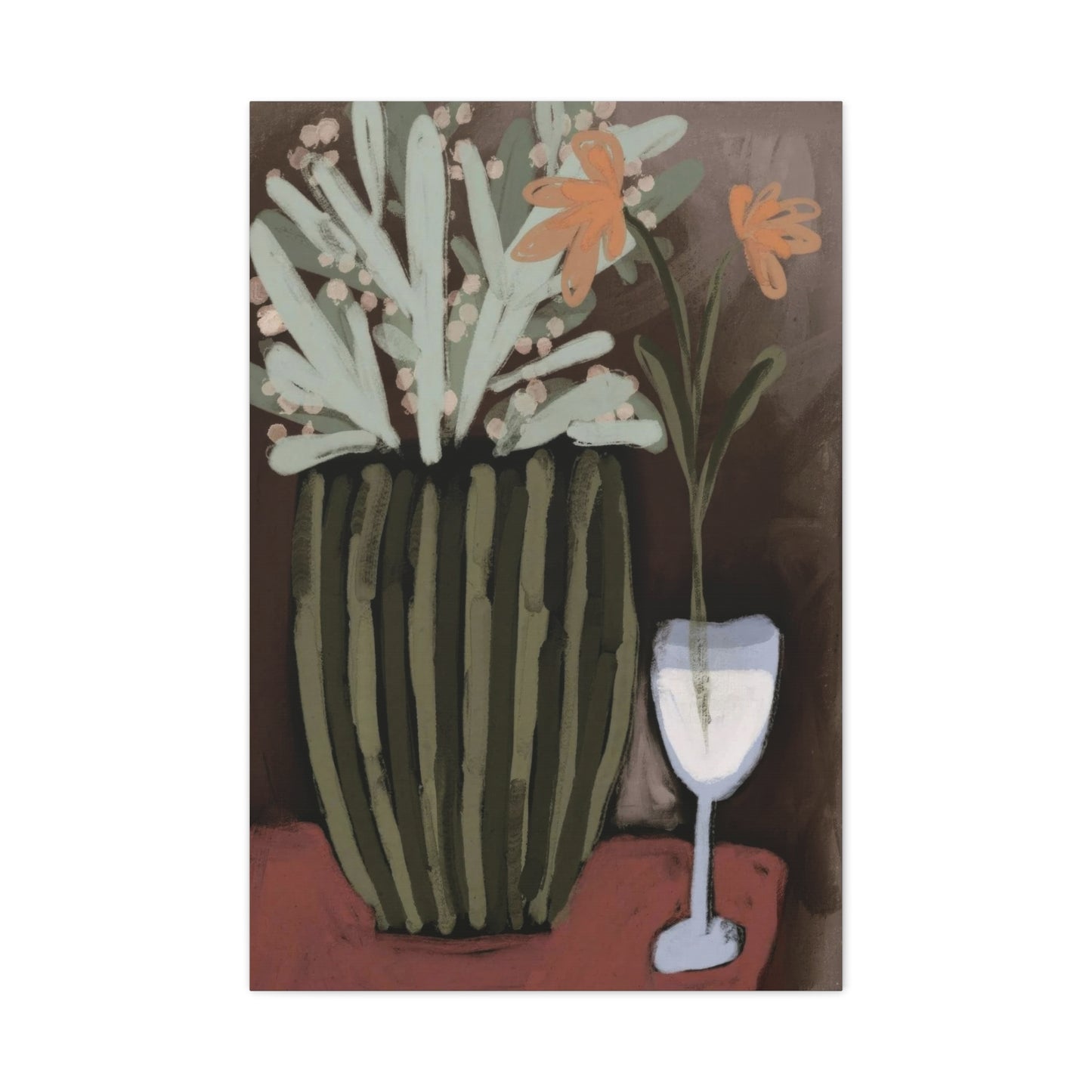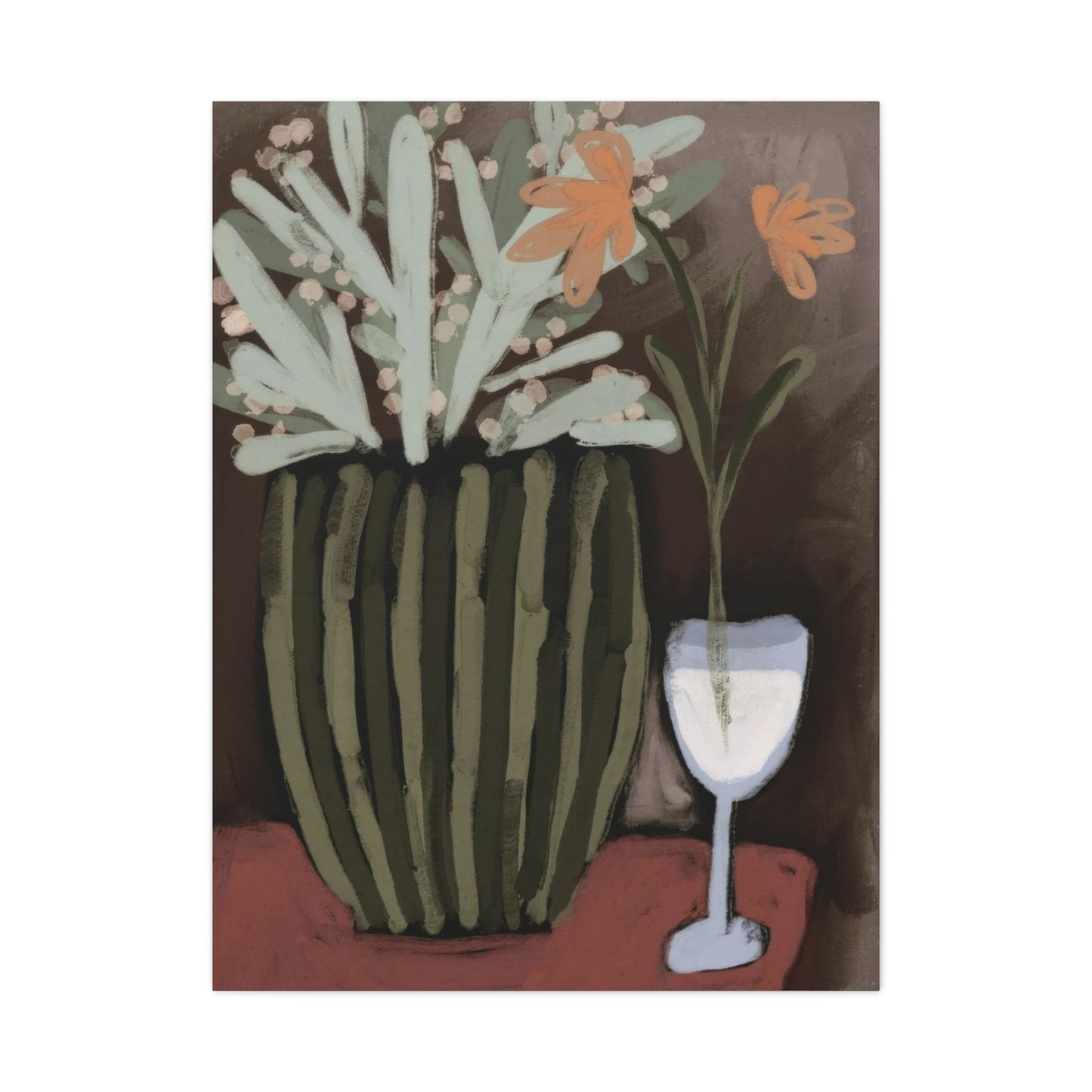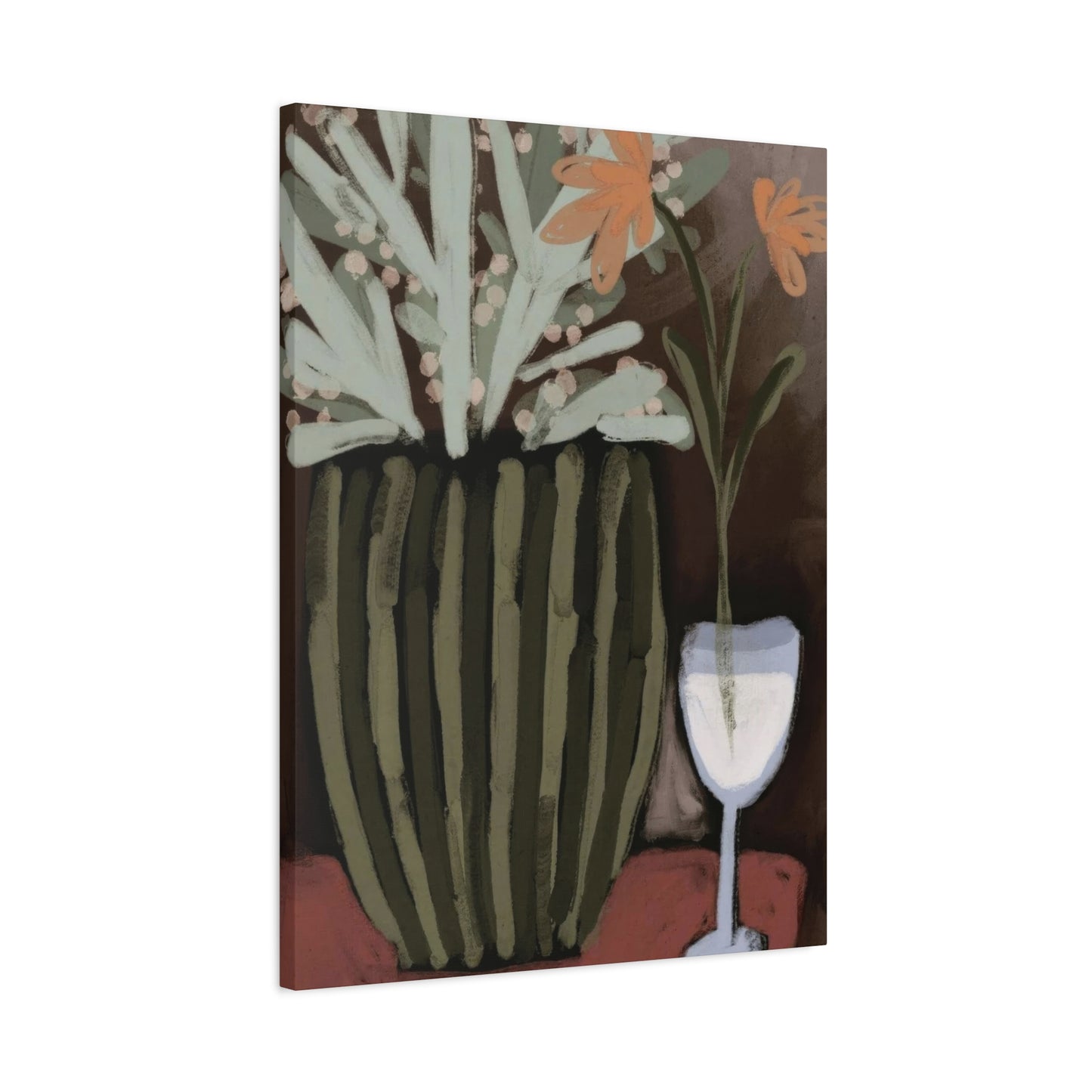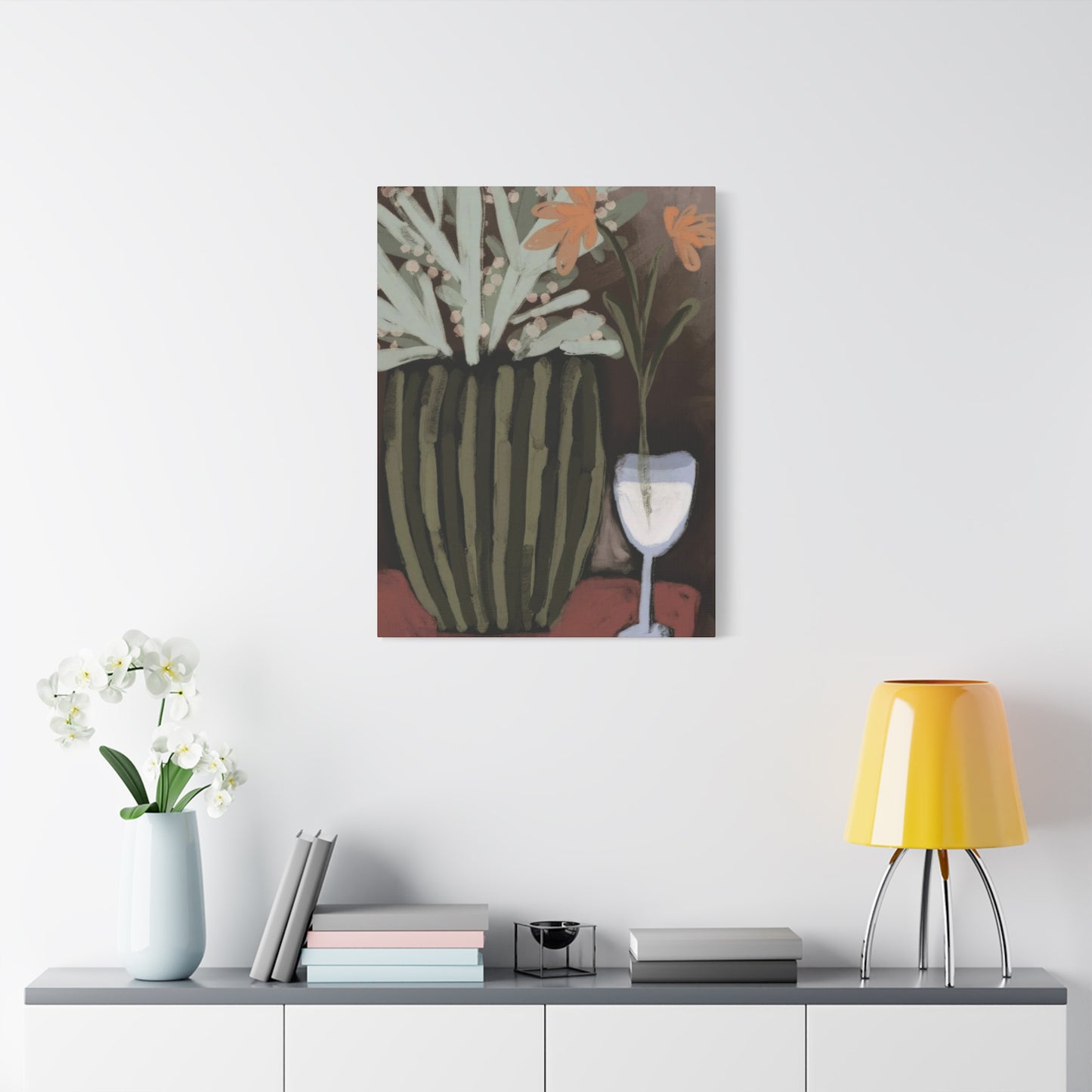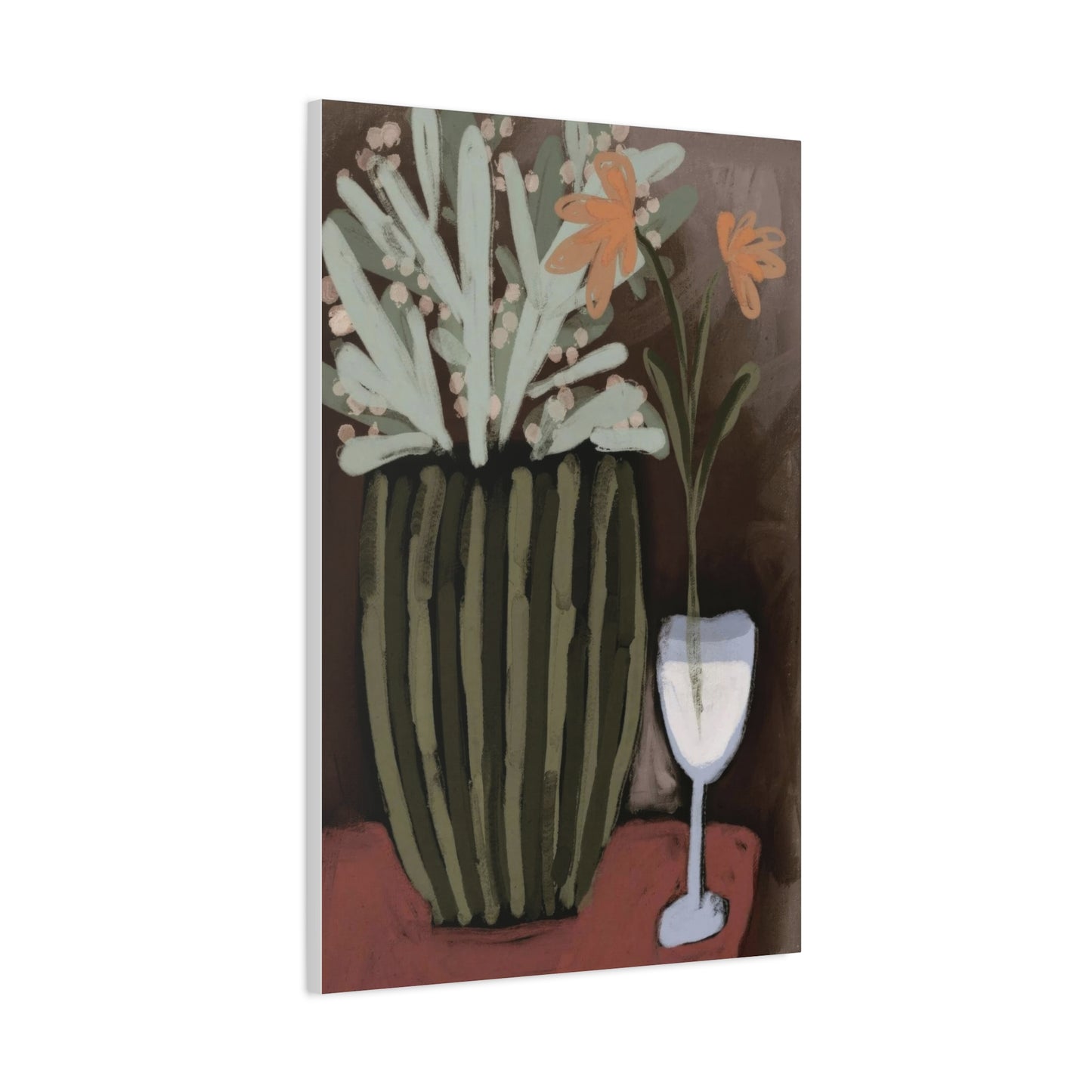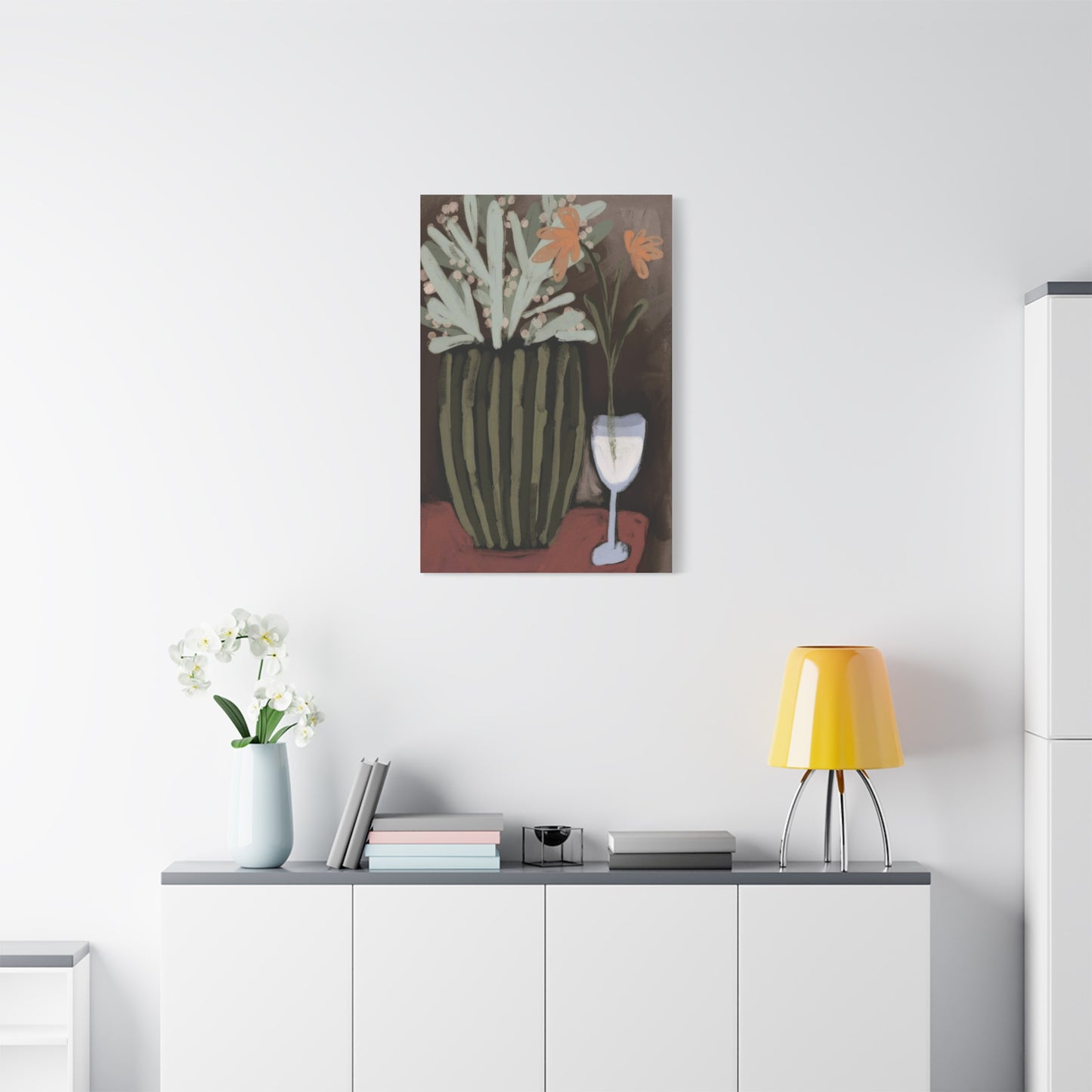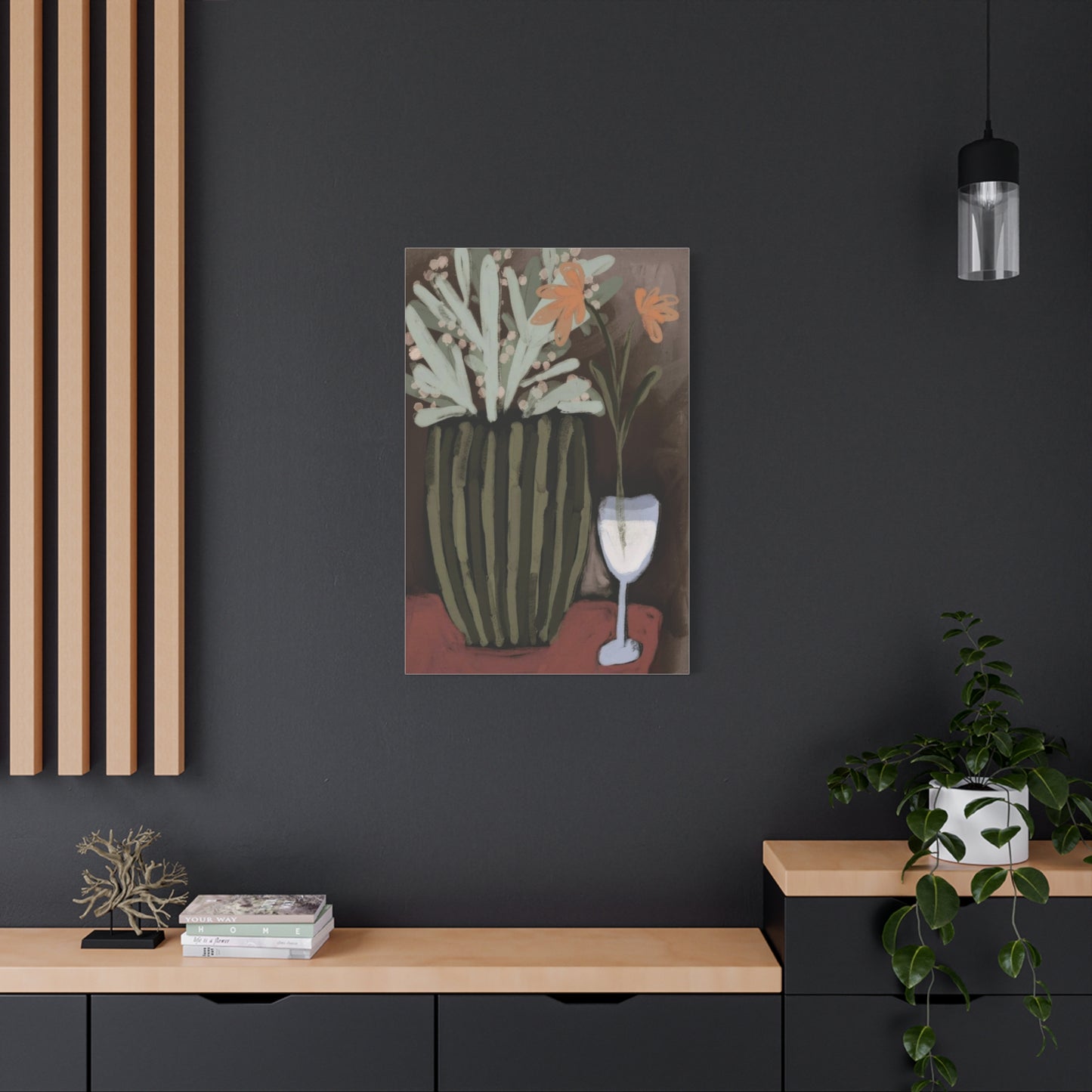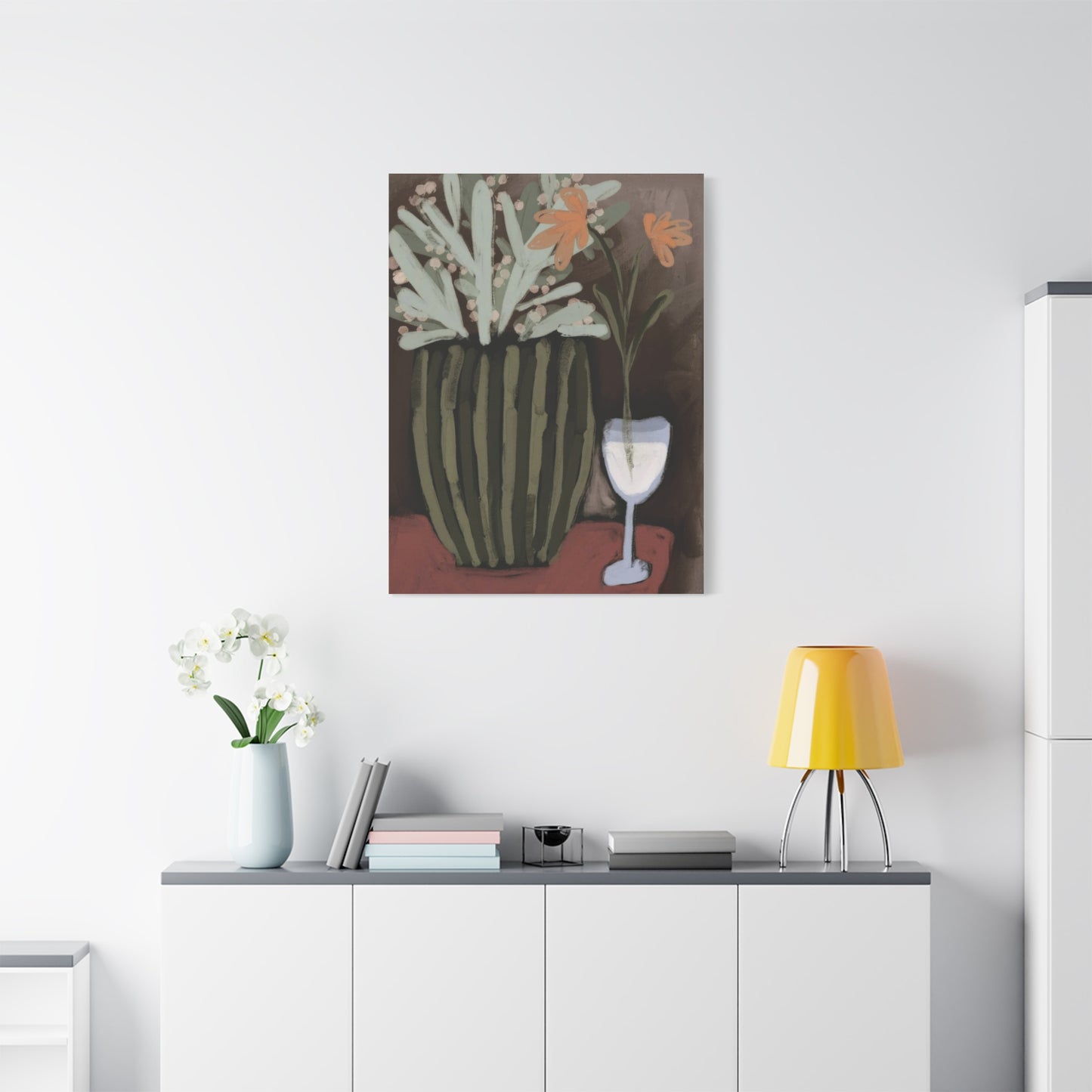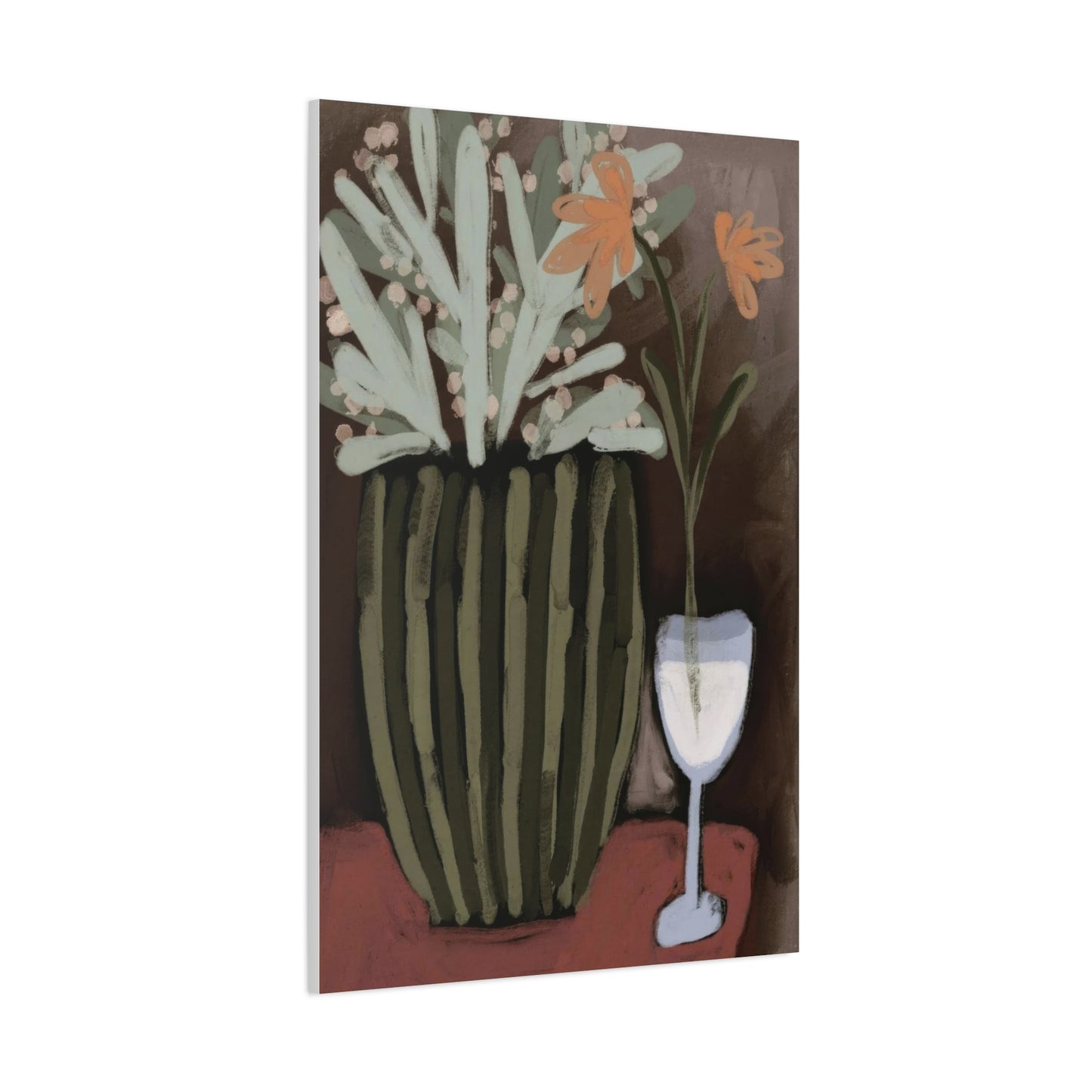The Healing Power of Nature: Why Blooming Cactus Wall Art Can Bring Calm and Serenity to Your Home
The world of interior decoration has witnessed a remarkable surge in nature-inspired elements, and among these trending choices, blooming cactus wall art stands out as a captivating option that combines aesthetic appeal with symbolic meaning. This decorative choice represents more than just a passing trend; it embodies a connection to natural beauty, resilience, and the striking contrast between harsh desert environments and delicate floral blooms. As homeowners and design enthusiasts seek ways to infuse their living spaces with character and warmth, the incorporation of flowering desert plant imagery has emerged as a sophisticated solution that transcends conventional decorating boundaries.
The appeal of these botanical artworks lies in their unique ability to capture a moment of rare beauty. Desert flora, particularly those that produce stunning flowers, spend much of their existence in dormant states, conserving energy and resources until conditions align perfectly for blooming. When these moments arrive, the transformation is nothing short of spectacular. Capturing this fleeting beauty through artistic representation allows individuals to preserve and celebrate these magnificent displays year-round, bringing the wonder of desert blooms into everyday living environments.
Interior designers and homeowners alike have discovered that incorporating imagery of flowering succulents creates visual interest while maintaining a sense of calm sophistication. The juxtaposition of sharp spines with soft, colorful petals creates a compelling visual narrative that speaks to themes of protection and beauty coexisting harmoniously. This duality makes such artwork particularly meaningful, offering viewers a reminder that strength and gentleness can flourish together, much like the plants themselves thrive in challenging conditions while producing breathtaking flowers.
The color palette associated with these desert blooms ranges from vibrant magentas and deep reds to soft pinks, sunny yellows, and pristine whites. This spectrum provides decorators with versatile options that can either complement existing color schemes or serve as bold accent pieces that command attention. The green tones of the plant bodies offer a grounding element that connects the artwork to broader nature-inspired design themes, while the blooms themselves inject personality and energy into any space they inhabit.
Beyond their visual appeal, these artistic representations carry cultural significance rooted in southwestern traditions and desert landscapes. Many indigenous peoples have long revered these plants for their ability to survive and flourish in harsh conditions, viewing them as symbols of endurance, adaptation, and the rewards of patience. By bringing these images into contemporary homes, decorators tap into this rich symbolic heritage while creating spaces that feel both grounded and aspirational.
The textural qualities of flowering desert plants also translate beautifully into various artistic mediums. Whether rendered in watercolor, captured through photography, illustrated in graphic designs, or created through mixed media approaches, the distinctive shapes and structures of these plants lend themselves to compelling compositions. The geometric patterns formed by spine arrangements, the organic curves of paddle-shaped segments, and the delicate complexity of flower structures provide artists with rich material for creating visually engaging pieces that reward close examination.
As environmental consciousness grows, many people feel drawn to representations of plants that exemplify water conservation and sustainable living. Desert flora has evolved remarkable strategies for thriving with minimal resources, making them powerful symbols for contemporary concerns about sustainability and environmental stewardship. Displaying artwork featuring these resilient plants can serve as a subtle reminder of the importance of adaptation and resourcefulness in our own lives.
The popularity of these botanical images also reflects a broader cultural fascination with desert landscapes and the unique beauty they offer. Television shows, films, and travel photography have brought the stark majesty of arid regions into mainstream consciousness, inspiring a generation of design enthusiasts to incorporate desert aesthetics into their homes. This trend extends beyond mere decoration, representing a lifestyle choice that values simplicity, authenticity, and connection to the natural world.
Enhancing Interior Spaces with Flowering Desert Plant Imagery
When considering how to incorporate these distinctive botanical artworks into living spaces, the transformative potential becomes immediately apparent. The strategic placement of imagery featuring blooming succulents can fundamentally alter the atmosphere of a room, introducing elements that engage the senses and create focal points that draw the eye and spark conversation. These pieces function as more than mere wall coverings; they serve as windows into a different ecosystem, bringing the serene beauty of arid landscapes into urban and suburban environments.
The psychological impact of viewing botanical imagery has been well documented by researchers studying the effects of nature exposure on human wellbeing. Studies consistently show that even representations of natural scenes can reduce stress, improve mood, and enhance cognitive function. When individuals surround themselves with images of flowering plants, they create environments that support mental health and emotional balance. The specific choice of desert blooms adds an additional layer of meaning, as these plants represent triumph over adversity and the ability to create beauty in unlikely circumstances.
Room dynamics shift noticeably when artwork featuring colorful cactus flowers is introduced. A previously neutral wall becomes a statement surface, while a monotonous color scheme gains depth and interest. The vertical lines created by columnar varieties draw the eye upward, making ceilings appear higher and spaces feel more expansive. Meanwhile, the spreading forms of paddle-shaped species create horizontal movement that can make narrow rooms feel wider and more balanced.
Lighting plays a crucial role in how these artworks present themselves throughout the day. Morning light may emphasize the cool tones in the green plant bodies, while afternoon sun can make flower colors appear more vibrant and saturated. Evening illumination from lamps creates entirely different moods, potentially casting shadows that add drama and depth to the imagery. This changing quality ensures that the artwork continues to engage viewers rather than fading into the background of daily life.
The scale of the artwork significantly influences its impact on a space. Large-scale pieces create immediate drama and can anchor entire room designs, while smaller works might be grouped in gallery-style arrangements that build visual interest through repetition and variation. The choice between a single commanding piece and a collection of related images depends on the room's dimensions, existing furnishings, and the overall aesthetic goals of the space.
Color coordination between the artwork and surrounding elements requires thoughtful consideration. Some decorators prefer to pull accent colors from the flower hues, using pillows, throws, or other accessories that echo the pinks, yellows, or oranges present in the blooms. Others maintain neutral surroundings that allow the artwork to serve as the primary color source in the room. Both approaches can succeed when executed with attention to balance and proportion.
The texture and finish of the artwork itself contributes to the overall sensory experience of a room. Matte finishes absorb light and create a soft, contemporary feel, while glossy surfaces reflect light and add a touch of glamour. Canvas prints offer a traditional fine art appearance, whereas metal prints deliver modern edge and durability. Framed works behind glass provide formal elegance, while frameless presentations feel casual and approachable.
Placement height affects how viewers interact with the artwork. Pieces hung at eye level invite close examination and create intimate connections, while those positioned higher become architectural elements that contribute to the room's overall character without demanding constant attention. In spaces where people primarily sit, such as living rooms or bedrooms, lowering artwork slightly from standard hanging height ensures comfortable viewing from seated positions.
The architectural features of a room should inform placement decisions. Artwork can emphasize positive structural elements while downplaying less attractive features. A beautiful piece centered over a fireplace mantel enhances that focal point, while art placed on a feature wall draws attention away from awkward corners or necessary but unattractive elements like electrical panels or thermostats.
Seasonal considerations may also influence how these artworks function in a space. The bright, warm tones associated with many desert blooms feel particularly welcome during colder months, bringing a sense of sunshine and warmth to winter-darkened rooms. In summer, the same pieces might evoke thoughts of desert heat, which could be either appealing or overwhelming depending on regional climate and personal preferences.
Creating Vibrant Atmospheres Through Flowering Succulent Artwork
The transformative power of incorporating flowering desert plant imagery extends beyond mere aesthetic enhancement; it fundamentally influences the emotional tenor of interior environments. When a room features artwork showcasing these vibrant blooms, the space immediately gains an infusion of energy and life that static, monochromatic designs simply cannot provide. The bright pops of color characteristic of these flowers introduce visual excitement that stimulates the senses without overwhelming them, creating balanced environments that feel both lively and restful.
Consider the typical experience of entering a room decorated in neutral tones. While such spaces offer calm and versatility, they can sometimes feel sterile or lacking in personality. The introduction of a single piece featuring a magnificently blooming specimen transforms the atmosphere entirely. Suddenly, the space has a focal point, a conversation starter, and a source of visual interest that invites closer examination. The warm tones of pink, coral, or yellow blooms inject warmth into cool gray schemes, while bright magenta or orange flowers add excitement to beige or cream backgrounds.
The specific colors present in desert flower imagery carry their own psychological associations that contribute to room atmosphere. Pink blooms evoke feelings of gentleness, nurturing, and romance, making them ideal for bedrooms or spaces designed for relaxation. Yellow flowers bring associations with sunshine, happiness, and optimism, energizing spaces like home offices or breakfast nooks. Red and orange blooms convey passion, energy, and warmth, creating dynamic atmospheres in social spaces like living rooms or dining areas. White flowers communicate purity, simplicity, and clarity, supporting minimalist design philosophies while adding visual interest through form and texture rather than color.
The contrast between the flowers and their spiny hosts creates visual tension that keeps the artwork engaging over time. This juxtaposition prevents the pieces from becoming mere background decoration, instead ensuring they remain objects of interest that reward repeated viewing. The eye naturally moves between the soft, organic forms of the petals and the geometric precision of spine patterns, creating a viewing experience that engages both the emotional and analytical aspects of perception.
Rooms featuring this type of botanical artwork often feel more connected to nature, even in decidedly urban settings. High-rise apartments and downtown condos can feel isolated from the natural world, leading to feelings of disconnection and stress. By bringing representations of natural beauty indoors, residents create psychological bridges to the outdoors, satisfying innate human needs for connection with living systems. This biophilic design approach supports wellbeing by acknowledging and addressing our evolutionary relationship with the natural environment.
The brightness factor associated with flowering plant imagery should not be underestimated. In spaces with limited natural light, artwork featuring sunny blooms can compensate somewhat for the lack of actual sunshine, creating the impression of brightness even when windows are small or north-facing. The visual warmth of coral and peach blooms particularly excels at making dim spaces feel more inviting and cheerful, counteracting the potentially depressing effects of inadequate natural light.
Seasonal affective patterns can also be addressed through strategic use of these vibrant images. During long, dark winters, artwork featuring brilliant blooms serves as a reminder of warmer seasons and helps maintain emotional equilibrium when outdoor landscapes are bare and colorless. The enduring quality of the depicted plants, which bloom even in harsh conditions, can provide metaphorical encouragement during difficult periods, suggesting that beauty and growth remain possible even when circumstances seem challenging.
The animation quality inherent in flower imagery contributes to the liveliness of a space. Unlike abstract or geometric art, which remains static in its impact, botanical images suggest growth, change, and the passage of time. Viewers can imagine the bloom opening, the plant growing, and the natural cycles continuing beyond the frozen moment captured in the artwork. This implied motion and change keep the pieces feeling dynamic rather than stagnant.
Chromatic intensity varies widely across different species and even among individual blooms, allowing decorators to fine-tune the energy level they wish to introduce. Vivid, saturated colors create high-energy environments suitable for active spaces, while softer, more muted tones support relaxation and contemplation. Understanding these distinctions enables more intentional design choices that align with the intended function of each room.
The relative rarity of flowering desert plants in nature makes their artistic representation feel special and somewhat exotic. Unlike images of common garden flowers that viewers encounter regularly in everyday life, these blooms retain an element of novelty and surprise. This exotic quality elevates the perceived sophistication of a space, suggesting the occupant possesses refined taste and appreciation for the unusual and extraordinary.
Nature-Inspired Statements Through Desert Flora Imagery
Making a statement through interior design requires selecting elements that reflect personal values, aesthetic preferences, and individual identity. Artwork featuring blooming desert plants serves as a powerful vehicle for self-expression, communicating messages about the occupant's relationship with nature, appreciation for resilience, and attraction to unconventional beauty. These pieces declare that the space belongs to someone who values authenticity over trends, who finds inspiration in unexpected places, and who appreciates the rewards of patience and perseverance.
The statement-making potential of these artworks stems partly from their relative uniqueness in mainstream decorating. While floral imagery has long been a staple of home decor, traditional choices typically feature garden varieties like roses, tulips, or sunflowers. Choosing instead to showcase desert blooms demonstrates a willingness to venture beyond conventional options, suggesting an independent spirit and adventurous aesthetic sensibility. This choice signals sophistication and a curated approach to design rather than reliance on mass-market decorating formulas.
Scale plays a crucial role in statement-making impact. A wall-sized canvas featuring a single magnificent bloom commands attention and establishes itself as the undisputed focal point of a room. Such bold choices require confidence and commitment, as the artwork will dominate the visual landscape and influence all other design decisions in the space. For those willing to embrace this approach, the results can be spectacular, creating rooms that feel intentional, cohesive, and memorable.
The narrative quality embedded in these images contributes to their effectiveness as statement pieces. Every flowering desert plant tells a story of adaptation, survival, and eventual triumph. The harsh conditions that shape these plants, the patient accumulation of resources, and the explosive beauty of their blooms create a compelling arc that resonates with human experiences of struggle and success. Displaying such imagery suggests identification with these themes and appreciation for the deeper meanings beneath surface aesthetics.
Artistic style significantly influences the type of statement being made. Photorealistic renderings communicate appreciation for natural accuracy and scientific observation, suggesting a personality that values precision and authenticity. Watercolor interpretations convey sensitivity, creativity, and a more emotional connection to the subject matter. Bold graphic treatments indicate modern sensibilities and a preference for strong design over literal representation. Abstract approaches suggest philosophical inclinations and comfort with ambiguity and interpretation.
The choice to feature blooming specimens rather than dormant plants sends specific messages about optimism and the celebration of peak moments. Rather than focusing on the survival aspects of these plants, flowering imagery emphasizes joy, beauty, and the rewards of endurance. This focus on positive outcomes rather than struggles suggests a forward-looking, optimistic worldview that seeks to celebrate victories rather than dwelling on difficulties.
Cultural associations with desert landscapes also inform the statements these artworks make. For those with personal connections to southwestern regions, the imagery may represent home, heritage, and cultural identity. For others, it might symbolize a love of travel, appreciation for diverse ecosystems, or fascination with regions quite different from their everyday environments. These layers of meaning enrich the artwork's significance and deepen its connection to the occupant's sense of self.
The environmental implications of celebrating desert plants provide another dimension of statement-making. In an era of increasing water scarcity and climate change, these water-conserving species represent sustainability and ecological awareness. Displaying their images can signal commitment to environmental values and recognition of the need for adaptation in response to changing conditions. This subtle messaging aligns interior spaces with broader social and environmental concerns without resorting to overt political statements.
Collector mentality often drives statement piece selection, with individuals seeking distinctive works that reflect their unique taste rather than mass-produced items found in every chain store. Artwork featuring unusual blooming species satisfies this desire for exclusivity while remaining accessible to those without unlimited budgets. Limited edition prints, original paintings, and custom photography offer varying levels of rarity to suit different collecting philosophies and financial considerations.
The conversation-starting potential of distinctive botanical artwork should not be overlooked. Visitors naturally comment on striking visual elements, providing opportunities for hosts to share their appreciation for these remarkable plants, discuss the artwork's origins, or explain the symbolic significance they find in the imagery. These interactions enrich social experiences and help create memorable impressions that extend beyond the immediate aesthetic impact.
Reimagining Living Areas with Desert Bloom Artwork
The strategic placement of flowering desert plant imagery within living spaces initiates a process of spatial reimagining that extends far beyond simple decoration. When thoughtfully integrated, these artworks become catalysts for comprehensive design evolution, inspiring color choices, furniture arrangements, and accessory selections that coalesce into cohesive, intentional environments. The process begins with selecting the perfect piece but ultimately encompasses every element within view, creating harmonious spaces that feel purposeful and complete.
Initial placement often occurs in response to identified gaps or weaknesses in existing arrangements. A long, blank wall in a living room begs for a horizontal piece or gallery arrangement. A space above a sofa demands an anchor piece of appropriate scale. Empty corners benefit from vertical compositions that draw the eye upward and make use of often-neglected spatial volumes. By addressing these physical needs with carefully chosen botanical imagery, decorators simultaneously solve practical problems and introduce aesthetic enhancements.
The ripple effect of adding significant artwork to a space manifests in unexpected ways. Colors present in the blooms may inspire new throw pillow selections or influence choices when reupholstering existing furniture. The organic shapes might encourage the addition of curved elements to balance angular furniture lines. The natural subject matter could prompt the introduction of actual plants, wooden accents, or stone elements that reinforce the connection to nature. Each decision builds upon the previous ones, gradually transforming the space into something more cohesive and intentional.
Lighting considerations become paramount once significant artwork is in place. Proper illumination ensures the piece can be appreciated at all hours while also using light to direct attention and create mood. Track lighting offers flexibility, allowing adjustments as furniture arrangements change. Picture lights provide focused illumination that emphasizes the artwork while creating ambient glow. Natural light should be managed to prevent fading while taking advantage of how sunlight interacts with colors and textures at different times of day.
Furniture arrangement may require reconsideration once a dominant artwork establishes a new focal point. Seating should be positioned to allow comfortable viewing without straining, while traffic patterns must accommodate pauses for contemplation. The artwork effectively anchors the room, and all other elements should relate to it in hierarchical fashion, creating clear visual relationships that guide the eye and establish order within the space.
The architectural relationship between artwork and room structure deserves careful attention. Artwork should respect the scale and proportions of the wall it occupies, neither disappearing into vastness nor overwhelming modest dimensions. Alignment with architectural features like windows, doors, and built-in elements creates a sense of intentionality and polish. Even in older homes with less-than-perfect construction, thoughtful artwork placement can disguise irregularities and draw attention to positive features.
Layering techniques add depth and sophistication to rooms featuring prominent botanical artwork. Rather than leaving the wall bare except for the central piece, consider adding complementary elements that build outward from the core image. Floating shelves might display small potted succulents that echo the artwork's subject. Sculptural objects in coordinating colors or materials can create visual rhythm. Textiles with subtle botanical patterns might appear on nearby furniture, reinforcing themes without becoming repetitive.
The relationship between the artwork and flooring should not be overlooked. Natural materials like wood, stone, or terracotta tile resonate with desert imagery and reinforce natural themes. The warm tones of these materials complement the earth tones present in plant bodies and enhance the warmth of flower colors. Even with carpeted rooms, area rugs in appropriate colors and textures can mediate between floor and wall, creating visual continuity.
Window treatments interact significantly with wall art, particularly when windows and artwork share the same wall. Simple, clean-lined treatments avoid competing with the artwork, while heavier, more ornate options can overwhelm delicate imagery. The goal is achieving balance where both elements contribute to the overall design without fighting for dominance. In some cases, eliminating window treatments entirely may be appropriate, allowing architecture and art to take center stage.
Ceiling height influences optimal artwork size and placement, with higher ceilings demanding larger pieces or higher hanging positions to maintain proper scale relationships. In rooms with standard eight-foot ceilings, moderately sized pieces hung at traditional heights work well. Spaces with soaring ceilings may benefit from oversized statement pieces or vertically-oriented compositions that emphasize the room's impressive height. The key lies in maintaining proportional relationships that feel instinctive rather than forced.
Complementing Bohemian and Contemporary Design Philosophies
The remarkable versatility of flowering desert plant imagery reveals itself most clearly in its ability to enhance both bohemian and contemporary design schemes, two aesthetic approaches that might initially seem incompatible yet both find common ground in these botanical artworks. This dual compatibility stems from the inherent qualities of the subject matter, which combines organic naturalism that resonates with bohemian sensibilities and clean, sculptural forms that align with contemporary preferences. Understanding how to leverage these qualities enables decorators to successfully integrate these pieces across diverse stylistic contexts.
Bohemian interiors thrive on layered eclecticism, mixing patterns, textures, and cultural influences to create spaces that feel collected, personal, and richly expressive. Within this framework, artwork featuring blooming succulents contributes natural elements that ground more fanciful components. The earthy reality of these plants provides a counterbalance to flowing fabrics, ornate patterns, and decorative excess that characterize boho aesthetics. The organic subject matter aligns with bohemian values of nature connection, while the vibrant bloom colors harmonize with the bold hues typical of this style.
Textural considerations particularly matter in bohemian settings, where varied surfaces create visual and tactile interest. A canvas print with visible brush strokes or textured paper adds another layer to the sensory experience, while the plants themselves represent texture through their spines, segments, and petal structures. These textural elements converse with woven wall hangings, macramé, and the various fabrics typically present in boho rooms, contributing to the overall richness without introducing discordance.
The cultural associations of desert plants, particularly their significance in southwestern and Mexican traditions, align beautifully with bohemian embrace of global influences. Incorporating imagery of these plants alongside textiles from indigenous American traditions, ceramic pieces with southwestern glazes, and furniture with Spanish colonial influences creates culturally coherent spaces that honor interconnected traditions. This approach avoids appropriation by presenting elements within their authentic cultural context rather than as decontextualized decorative objects.
Contemporary design, by contrast, emphasizes clean lines, edited selections, and purposeful restraint. Here, flowering desert plant imagery succeeds through its sculptural qualities and graphic impact. The strong shapes of plant bodies provide bold forms that read clearly from a distance, while the geometric arrangements of spines and segments appeal to contemporary appreciation for pattern and structure. The minimalist survival strategies of desert flora philosophically align with contemporary design principles of doing more with less.
Color use in contemporary contexts requires particular attention, as these spaces typically feature limited, carefully chosen palettes. Artwork should either coordinate with existing colors or serve as a planned accent that introduces one or two additional hues. A largely monochromatic room might feature black and white photography of blooming specimens, allowing form to dominate over color. Alternatively, a single vibrant bloom might provide the only significant color in an otherwise neutral space, creating dramatic impact through restraint.
The frame or presentation method significantly impacts how the artwork functions within contemporary spaces. Simple, clean-lined frames in metal or light wood maintain the aesthetic's characteristic restraint. Frameless mounting options that allow the image to float on the wall create modern sophistication. Gallery-style arrangements must be executed with precision, maintaining exact spacing and alignment that reflects contemporary values of intentionality and order.
Scale relationships become particularly critical in contemporary contexts, where fewer objects mean each element carries more visual weight. An undersized piece can disappear in a spare room, while an appropriately scaled work commands attention and justifies its presence. The negative space surrounding the artwork receives as much consideration as the piece itself, with generous margins emphasizing the artwork's importance and preventing the cluttered appearance that would violate contemporary principles.
Both bohemian and contemporary approaches benefit from the symbolic resonance of these plants, though the emphasis may differ. Bohemian spaces might highlight themes of natural beauty, cycles, and organic growth, while contemporary settings may focus on resilience, efficiency, and adaptation. These interpretive differences demonstrate how the same imagery can serve varied philosophical frameworks, providing visual pleasure while supporting deeper conceptual concerns.
The transitional quality of some flowering desert plant artwork allows it to bridge these stylistic poles, offering enough organic warmth for bohemian sensibilities while maintaining sufficient structure for contemporary acceptance. This versatility makes these pieces particularly valuable for those whose tastes span multiple aesthetics or who share spaces with partners or family members whose preferences differ. A carefully selected piece can satisfy diverse requirements while unifying potentially conflicting design directions.
Mixed-media presentations offer interesting possibilities for both styles. In bohemian contexts, combining photography with fabric elements, pressed botanicals, or mixed materials creates richly layered pieces that reward close examination. Contemporary applications might pair high-quality prints with sleek acrylic or metal elements, creating dimensional works that cast interesting shadows and change appearance with shifting light. Both approaches honor their respective aesthetic principles while pushing creative boundaries.
Symbolic Meanings Embedded in Desert Bloom Imagery
The decision to incorporate flowering desert plant artwork into living spaces carries significance that extends far beyond aesthetic preferences, tapping into rich veins of symbolism that have developed across cultures and throughout history. These remarkable organisms have captured human imagination precisely because they thrive where other plants fail, producing spectacular beauty in the most unlikely circumstances. Understanding the symbolic dimensions of these images enriches their presence in homes, transforming them from mere decoration into meaningful statements about values, aspirations, and worldview.
Resilience stands as perhaps the most prominent symbolic association with desert flora. These plants endure extreme temperatures, prolonged drought, intense sun, and poor soil conditions that would kill most vegetation. Their survival represents triumph over adversity, perseverance through hardship, and the strength to not merely survive but flourish under challenging circumstances. For individuals facing difficulties or transitions, artwork featuring these hardy specimens can serve as daily reminders that challenges can be overcome and that current struggles need not define future outcomes.
The blooming process itself carries profound symbolic weight. After months or years of patient energy accumulation, the plant produces flowers that may last only days or weeks before fading. This brief window of extraordinary beauty reminds viewers that patience brings rewards, that preparation enables achievement, and that brief moments of glory justify long periods of quiet work. In cultures increasingly focused on instant gratification and immediate results, these plants model alternative values of sustained effort and deferred reward.
Protection and boundaries emerge as another symbolic theme, represented by the spines that defend the plant from predators and reduce water loss through transpiration. Yet these same plants produce accessible flowers, offering nectar and pollen to pollinators despite their defensive posture. This duality suggests that maintaining healthy boundaries need not prevent generosity, that protection and sharing can coexist, and that self-care enables service to others. For those navigating relationship challenges or work-life balance, this symbolism offers a biological model for sustainable giving.
Adaptation appears as a central theme in the story these plants tell. Their water storage tissues, reduced leaves, specialized photosynthesis, and other evolutionary innovations demonstrate remarkable biological creativity in response to environmental pressures. This adaptive capacity symbolizes flexibility, resourcefulness, and the ability to develop novel solutions when conventional approaches fail. In rapidly changing professional and social landscapes, these plants model the adaptive thinking required to thrive amid disruption.
Water conservation and sustainability have made these plants increasingly symbolic of environmental consciousness. As water scarcity becomes a pressing global concern, organisms that flourish with minimal moisture represent sustainable living and mindful resource use. Displaying these images can signal commitment to environmental values and recognition that elegance and beauty need not require wasteful consumption. This symbolism aligns interior choices with ecological awareness without requiring overt political statements.
The flowering event represents fulfillment of potential, the culmination of a long developmental arc, and the achievement of a life goal. Seeds germinate, plants establish themselves, energy accumulates, and finally the genetic imperative to reproduce manifests in spectacular floral displays. This progression mirrors human developmental arcs from childhood through maturity to achievement and legacy. The imagery can inspire viewers to continue their own growth journeys, trusting that investment in development will eventually yield visible results.
Indigenous perspectives add additional layers of meaning, as many native peoples of arid regions have long revered these plants. Uses ranging from food and medicine to construction materials and ceremonial purposes have made them culturally significant, representing sustenance, healing, and spiritual connection. Honoring these perspectives means recognizing that the plants represent more than aesthetic objects; they embody cultural knowledge, traditional wisdom, and the sophisticated understanding indigenous peoples developed through centuries of observation and interaction.
The contrast between harsh exterior and delicate flowers symbolizes the coexistence of strength and tenderness within individuals. The fierce protection of spines surrounds vulnerable reproductive structures, modeling how toughness can serve to protect softness rather than opposing it. This imagery may particularly resonate with those reconciling different aspects of their personalities or navigating the balance between professional authority and personal vulnerability.
Rarity and preciousness attach to the flowering events of many desert species, some of which bloom only under specific conditions or at long intervals. This scarcity makes each bloom extraordinary and valuable, suggesting that true beauty and significance cannot be mass-produced or commodified. In consumer cultures saturated with disposable goods and manufactured experiences, these rare natural events represent authentic value and genuine rarity worth preserving and celebrating.
Independence and self-sufficiency characterize these plants, which require no coddling or intensive care to produce their best displays. Given appropriate conditions, they thrive with minimal intervention, modeling self-reliance and internal resourcefulness. For those valuing independence or working to develop greater self-sufficiency, these plants offer living examples of beings that draw strength from within rather than depending on external support.
Bringing Desert Landscapes into Interior Environments
The incorporation of desert-themed artwork featuring flowering plants represents more than simple decoration; it constitutes a form of environmental translation, bringing the austere beauty of arid landscapes into the controlled comfort of interior spaces. This translation process creates psychological connections to vast, open environments from within enclosed rooms, satisfying innate human needs for connection to diverse ecosystems while providing the security and comfort of indoor living. The effectiveness of this approach depends on understanding how visual cues can evoke entire environmental experiences.
Desert landscapes possess distinctive aesthetic qualities that differ markedly from other ecosystems. The expansive vistas, dramatic rock formations, intense colors, and distinctive vegetation create visual experiences impossible to replicate in temperate regions. For those who have never visited these areas, artwork provides windows into unfamiliar beauty. For those who have wandered desert trails or lived in arid regions, the images trigger memories and maintain connections to beloved landscapes despite geographic separation.
The quality of light in desert environments contributes significantly to their visual character. The clear, dry air allows intense sunlight to illuminate scenes with exceptional brightness and clarity, creating sharp shadows and saturated colors rarely seen in humid climates. Photographs and paintings that capture this lighting quality transport some of that luminous energy into interior spaces, brightening rooms and adding visual warmth that compensates for less dramatic natural light in other regions.
The color palette of desert environments extends beyond the beige and brown tones many people associate with arid lands. Terra cotta reds, ochre yellows, purple shadows, brilliant blue skies, and the surprising greens of adapted vegetation create rich, complex color stories that translate beautifully into interior design. When flowering plants add pinks, reds, yellows, and oranges to this mix, the palette becomes even more varied and visually exciting, offering ample inspiration for coordinating interior color schemes.
Geological features typical of desert regions, though not directly present in plant-focused artwork, often appear as contextual elements or influence composition choices. The horizontal layering of sedimentary formations inspires horizontal compositions and striped patterns. The vertical thrust of rock spires finds echoes in columnar plant forms. The weathered, textured surfaces of desert rocks connect to the textured surfaces of plant bodies. These subtle connections create coherence between the imagery and broader desert aesthetics.
The sense of space characteristic of desert environments translates through compositional choices in artwork. Negative space becomes a positive element, reflecting the openness of desert vistas. Single plant specimens photographed against plain backgrounds evoke isolation and the sparse distribution of vegetation in arid environments. Wide-angle compositions that include multiple plants scattered across the frame suggest the broader landscape context while maintaining focus on individual subjects.
Seasonal aspects of desert environments, though less dramatic than in temperate zones, still influence the visual character of these regions. The post-rain blooming period transforms normally muted landscapes into carpets of color, a phenomenon captured in artwork featuring mass blooms. The long, dormant periods between rains produce landscapes of subtle browns and grays punctuated by occasional green, creating different aesthetic moods that may appeal at different times or to different sensibilities.
Weather phenomena in desert regions contribute to atmospheric conditions that affect visual presentations. Dust storms create diffused light and limited visibility, producing mysterious, ethereal effects. Rain events, though rare, appear dramatic against clear skies, and rainbows gain particular intensity against desert backdrops. Morning and evening light creates long shadows and emphasizes textures, while midday sun bleaches colors and flattens forms. Artwork that captures these varied conditions offers different windows into desert experience.
The fauna associated with desert ecosystems occasionally appears in plant-focused artwork, particularly when depicting pollination relationships. Hummingbirds, bats, bees, and other pollinators create narrative context and emphasize the ecological relationships that sustain these plants. These additional elements enrich the imagery while educating viewers about the interconnected nature of desert life. The inclusion of animal subjects can also broaden the appeal of pieces to those interested in wildlife as well as botany.
Human cultural elements in desert regions, from adobe architecture to indigenous designs, sometimes inform artistic presentations of desert plants. Artwork that references these cultural elements through color choices, compositional techniques, or stylistic approaches creates richer, more layered meanings. This cultural integration honors the human communities that have thrived in these environments, recognizing that desert appreciation involves cultural as well as natural dimensions.
The seasonal timing of flowering events in desert regions creates anticipation and celebration when blooms finally appear. Artwork capturing these moments preserves peak experiences that would otherwise exist only in memory or fleeting photographs. By bringing these preserved moments into homes, decorators ensure year-round access to beauty that nature provides only occasionally, creating permanent summer regardless of actual seasons outside the windows.
Enhancing Neutral Color Schemes with Desert Bloom Art
Neutral color schemes dominate contemporary interior design, prized for their versatility, timelessness, and ability to create calm, sophisticated spaces. However, all-neutral environments risk feeling sterile, impersonal, or bland without carefully considered accent elements. Artwork featuring blooming desert plants provides an ideal solution to this challenge, introducing vibrant color and organic interest while respecting the restraint that makes neutral schemes appealing. The key lies in understanding how to balance colorful imagery with neutral surroundings for maximum impact.
The psychological comfort of neutral environments stems from their lack of chromatic demands. Whites, grays, beiges, and taupes allow the eye to rest, reducing visual stimulation and creating spaces that feel calm and undemanding. However, humans require some level of visual interest to remain engaged and emotionally connected to their environments. Without accent elements, neutral rooms can feel incomplete or uninspiring. Colorful artwork provides the necessary visual stimulation while maintaining overall restraint through limited application.
The intensity of color present in flowering plant imagery becomes particularly powerful against neutral backgrounds. A vibrant magenta bloom appears even more saturated when surrounded by soft gray walls, while coral-orange petals glow warmly against cool white surfaces. This contrast effect makes the artwork appear more vibrant than it would against competing colors, ensuring maximum impact from the chosen piece. The neutral surround effectively amplifies the artwork's visual power.
Conclusion
Blooming cactus wall art is more than just a decorative piece—it's a visual testament to the healing power of nature. Through its vibrant colors, delicate details, and the unique symbolism of the cactus plant, this type of art can create an environment of calm and serenity, bringing the restorative qualities of nature into the heart of your home. Cacti, often viewed as resilient symbols of endurance, can serve as a reminder of the strength and tranquility found in embracing life’s challenges with patience and grace. When paired with blooming flowers, these artworks convey a deeper sense of growth, renewal, and hope, encouraging a sense of peace and connection to the natural world.
Cactus plants are known for thriving in harsh conditions, making them a symbol of resilience, self-sufficiency, and tenacity. In the context of blooming cactus wall art, this symbolism is amplified by the vibrant, colorful flowers that emerge from the cactus’s spiny exterior. The juxtaposition of the cactus's ruggedness with the delicate beauty of its blooms can be seen as a metaphor for overcoming adversity and finding beauty in even the most challenging circumstances. This powerful symbolism can inspire a sense of calm, reminding us that growth and beauty can emerge from even the most difficult situations, bringing a sense of peace and hope to our lives.
The healing power of nature is deeply rooted in the calming effect that natural elements have on our minds and bodies. Studies have shown that exposure to nature—whether through outdoor experiences or through art—can reduce stress, lower anxiety, and improve overall well-being. Blooming cactus wall art brings nature into your home in a way that encourages relaxation and mindfulness. The soft hues of pinks, oranges, and purples that are often associated with blooming flowers create a soothing, warm atmosphere that invites you to slow down, breathe deeply, and enjoy the present moment. This type of art can transform any space into a sanctuary, offering a peaceful retreat from the hustle and bustle of daily life.
Another reason blooming cactus wall art is so effective in fostering serenity is the way it connects us to the concept of growth. Like the cactus, we too can experience periods of struggle or dormancy, but with time, patience, and care, we can bloom in our own way. The depiction of a cactus in full bloom serves as a visual reminder that there is always potential for personal growth and transformation, no matter the challenges we face. The bright, flourishing flowers on the cactus symbolize renewal and vitality, offering a positive affirmation that growth is always possible, even in difficult circumstances.
Furthermore, cactus art works well in a variety of interior design styles, from modern minimalist to southwestern and bohemian-inspired spaces. The natural forms and colors of blooming cactus paintings can harmonize with both contemporary décor and more rustic or earthy interiors. Whether placed in a living room, bedroom, or meditation space, cactus wall art serves as a grounding element, creating a calming focal point that brings the peaceful energy of the desert into your home. The simplicity of the cactus, combined with the vibrant energy of its blooms, creates a balanced, tranquil atmosphere, perfect for fostering relaxation and reflection.
Ultimately, blooming cactus wall art is a beautiful and meaningful way to incorporate the healing power of nature into your living space. Through its symbolism of resilience, growth, and beauty, it offers not only a visually stunning addition to your home but also a reminder of nature’s inherent ability to nurture and restore. Whether you’re drawn to its vibrant colors, its soothing connection to nature, or its deeper message of hope and renewal, cactus wall art can create a space of calm, serenity, and inspiration. By surrounding yourself with art that reflects the strength and beauty of the natural world, you invite healing energy into your home and create an environment that promotes peace, mindfulness, and well-being.


















